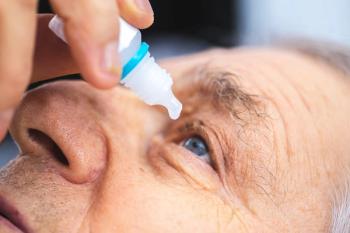
Bromfenac yields improvement in visual acuity
Analyses of visual acuity results from phase III clinical trials investigating Q.D. bromfenac sodium ophthalmic solution 0.09% for treatment of inflammation and reduction of pain after cataract surgery show treatment with this nonsteroidal anti-inflammatory drug provides functional benefits in addition to its anti-inflammatory and analgesic effects.
San Diego-Analyses of visual acuity (VA) results from phase III clinical trials investigating Q.D. bromfenac sodium ophthalmic solution 0.09% (Bromday, ISTA Pharmaceuticals) for treatment of inflammation and reduction of pain after cataract surgery show treatment with this nonsteroidal anti-inflammatory drug (NSAID) provides functional benefits in addition to its anti-inflammatory and analgesic effects, according to research presented at the annual meeting of the American Society of Cataract and Refractive Surgery.
The information was presented in a poster and included data from 559 patients receiving bromfenac and 278 placebo-treated controls. Treatment began on the day before surgery and continued on the day of surgery and for 14 days after the procedure. Efficacy and safety evaluations were performed on days 1, 3, 8, 15, and 22 postoperatively, including measurement of Snellen best-corrected visual acuity (BCVA). The VA data were converted to logMAR values post hoc for the purpose of statistical analysis.
The results showed that already by postoperative day 3, the proportion of patients achieving a 1-line or greater improvement from preoperative BCVA or a 3-line or greater gain was significantly higher among patients treated with bromfenac compared with the placebo group (p < 0.05).
At day 15, the day after study treatment was discontinued, 84% of patients in the bromfenac group and about 63% of controls had a ≥1-line BCVA improvement (p < 0.0001); rates for a ≥3-line improvement were 50% and 35% for the bromfenac and placebo groups, respectively (p < 0.0125).
At day 22 among bromfenac-treated patients, 87% had a ≥1-line VA improvement and 56% had a ≥3-line improvement; corresponding rates in the control group were 72% and 41%, respectively (p < 0.001 and p < 0.005, bromfenac versus placebo).
"Bromfenac blocks the activity of COX-1 and is a very potent inhibitor of COX-2 so that it effectively inhibits the release of prostaglandins that mediate pain and inflammation after surgery," said Bonnie An Henderson, MD, who was an investigator in Q.D. bromfenac FDA clinical trials and is in private practice, Ophthalmic Consultants of Boston, Waltham, MA, and assistant clinical professor of ophthalmology, Harvard Medical School, Boston. "It thereby reduces swelling and the presence of cells and flare in the anterior chamber postoperatively, and those benefits likely account for its association with improved VA.
"Consistent with that idea, the data from the primary efficacy endpoint analysis in the Q.D. bromfenac clinical trials, which looked at the summed ocular inflammation score, also showed the benefit of Q.D. bromfenac versus placebo for reducing postoperative inflammation was achieved early, by day 3 after surgery," Dr. Henderson added.
Although clinical trial data for other ophthalmic NSAIDs also show their efficacy for treating postoperative pain and inflammation and for improving VA, bromfenac 0.09% has the distinction of being approved for Q.D. use.
The potential impact of this convenient dosing schedule on patient compliance should not be overlooked, she said.
"Studies investigating compliance with ocular medications show that patients are far less likely to use their drops properly and completely if the product has to be dosed T.I.D. or Q.I.D. compared with just Q.D. or B.I.D.," Dr. Henderson concluded. "With better compliance, there is a much greater likelihood that the patient will benefit from the treatment prescribed."
FYI
Bonnie An Henderson, MD
E-mail:
Dr. Henderson is a consultant for ISTA Pharmaceuticals.
Newsletter
Want more insights like this? Subscribe to Optometry Times and get clinical pearls and practice tips delivered straight to your inbox.









































